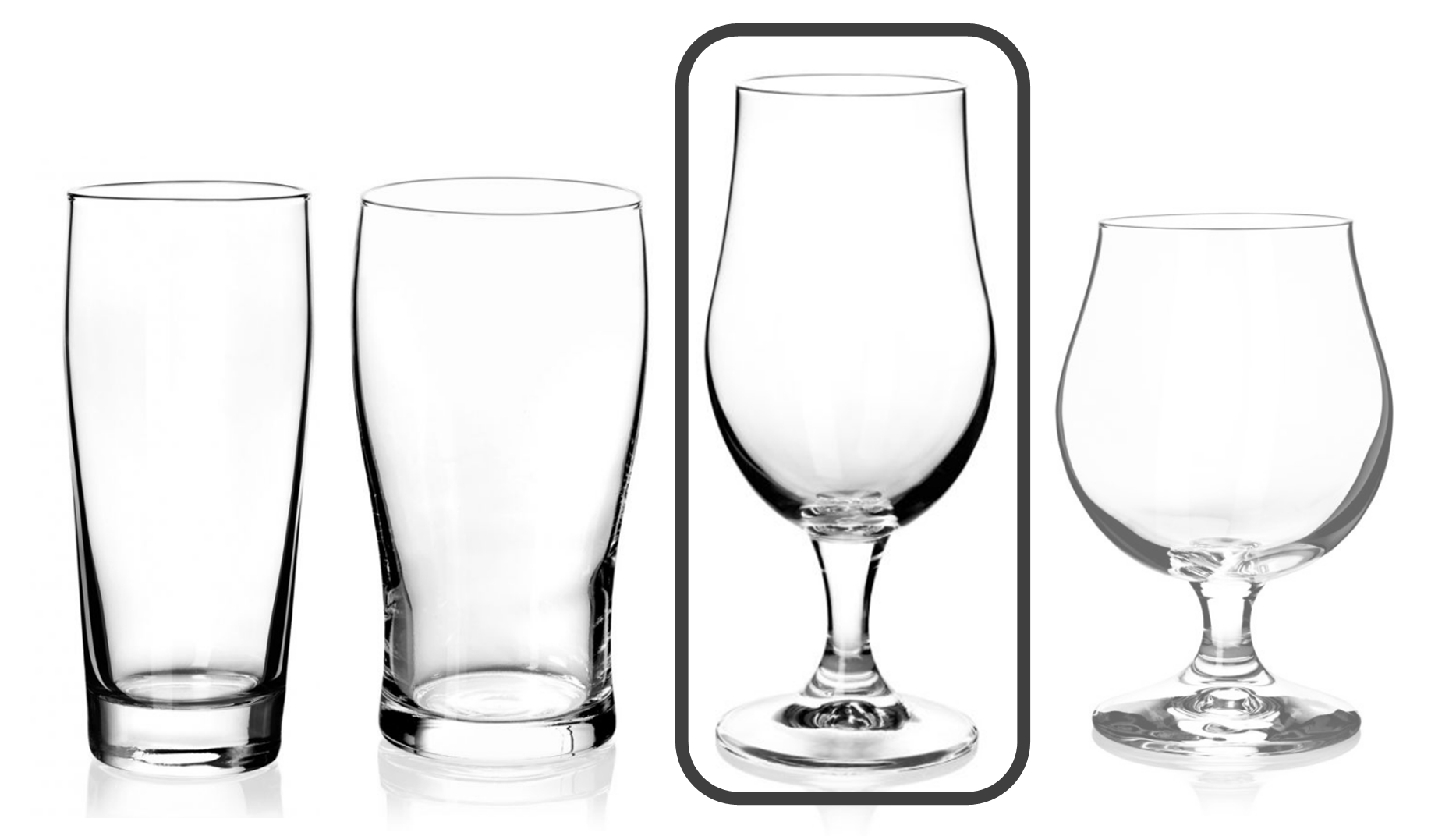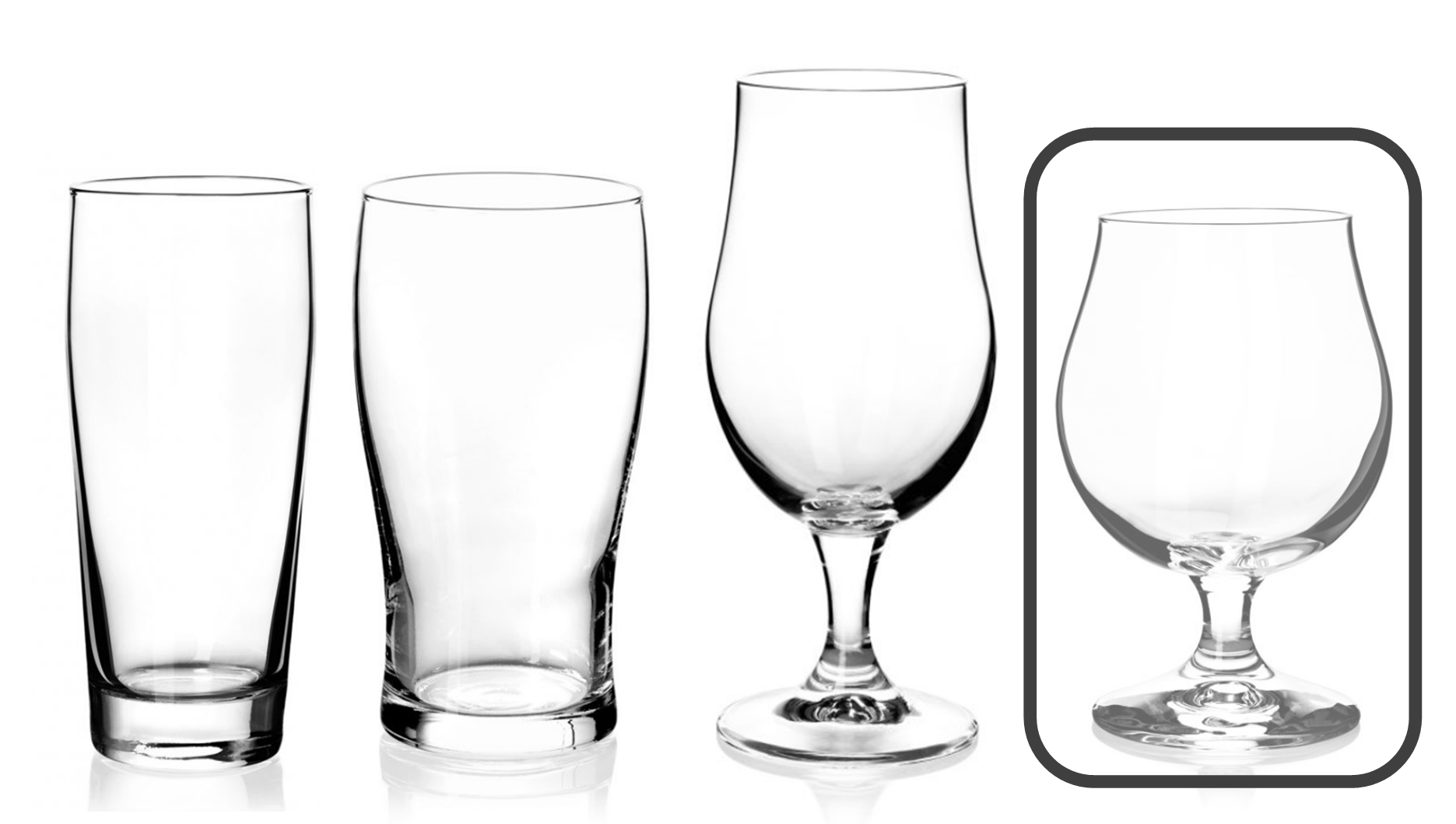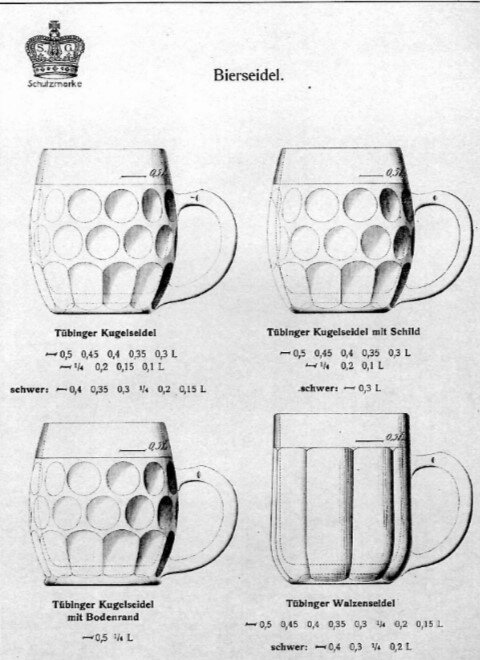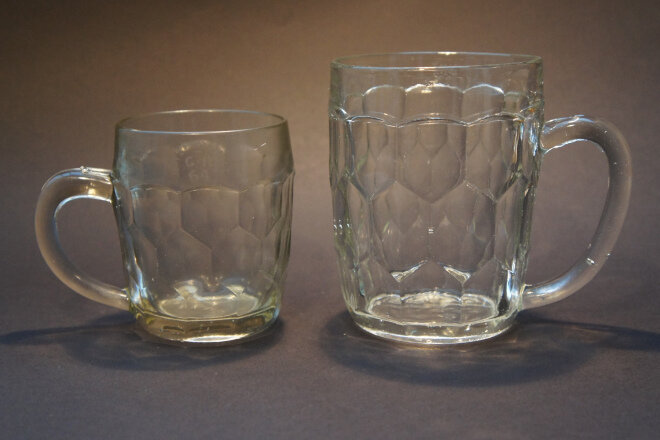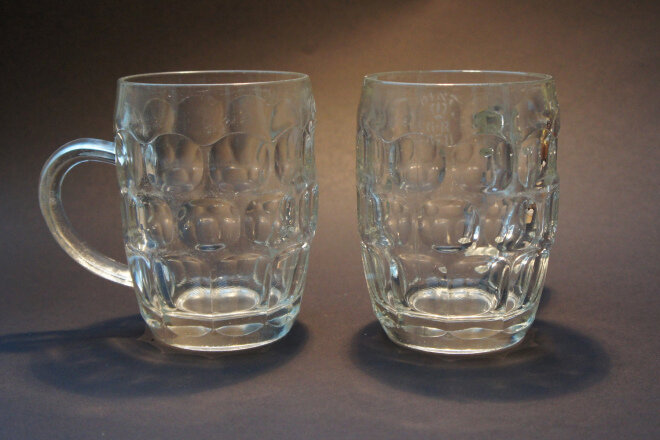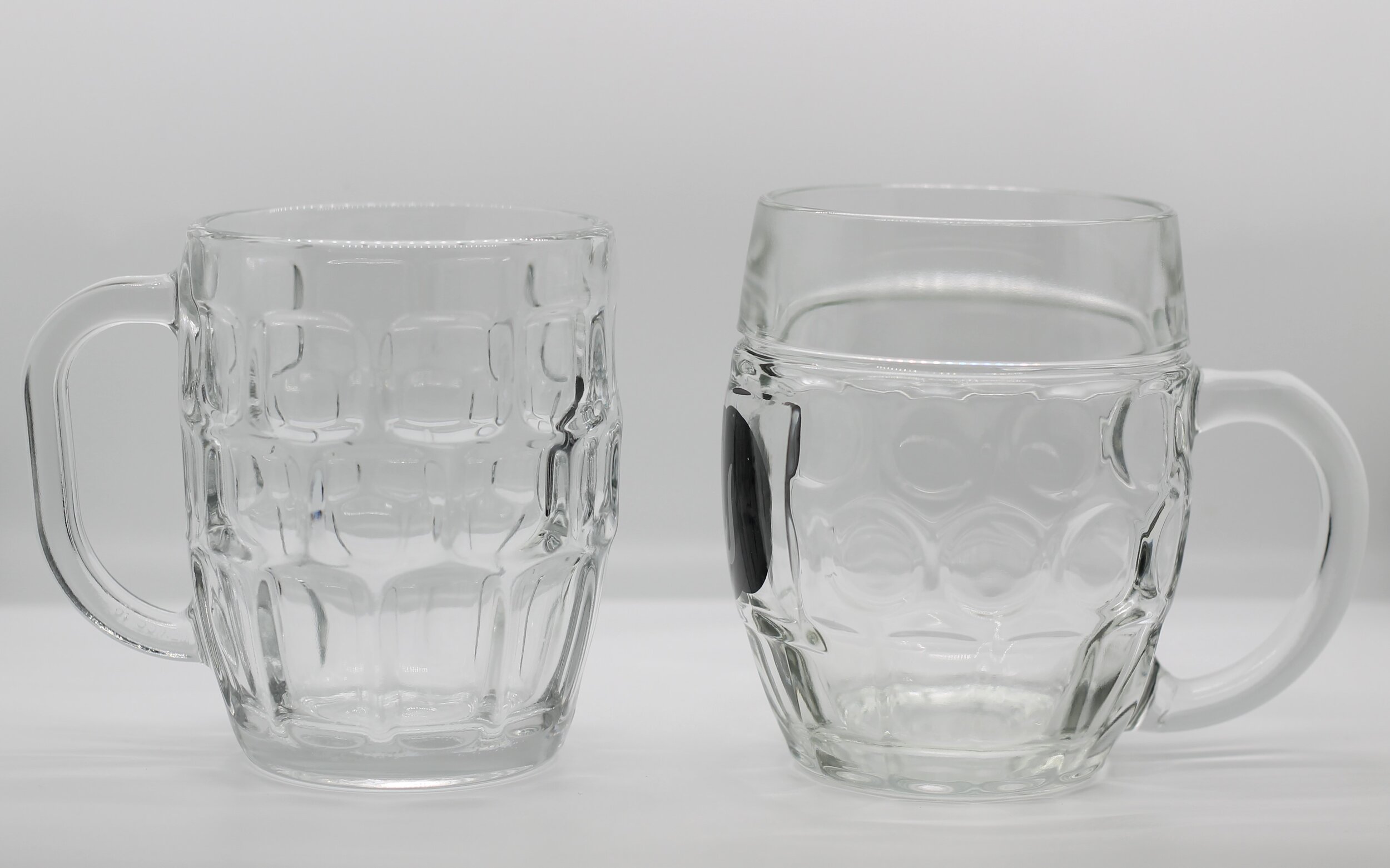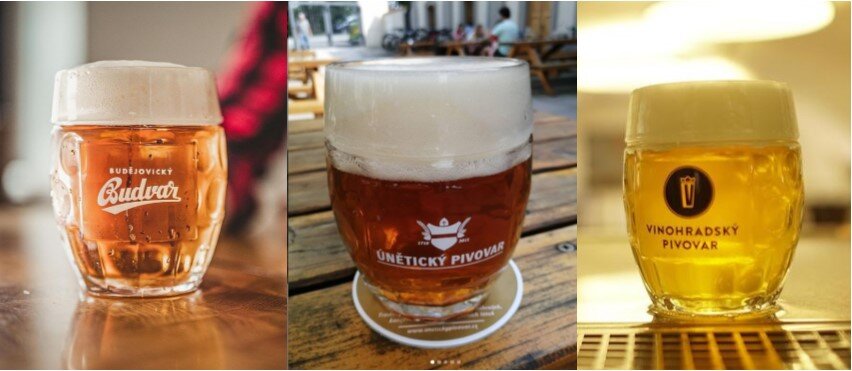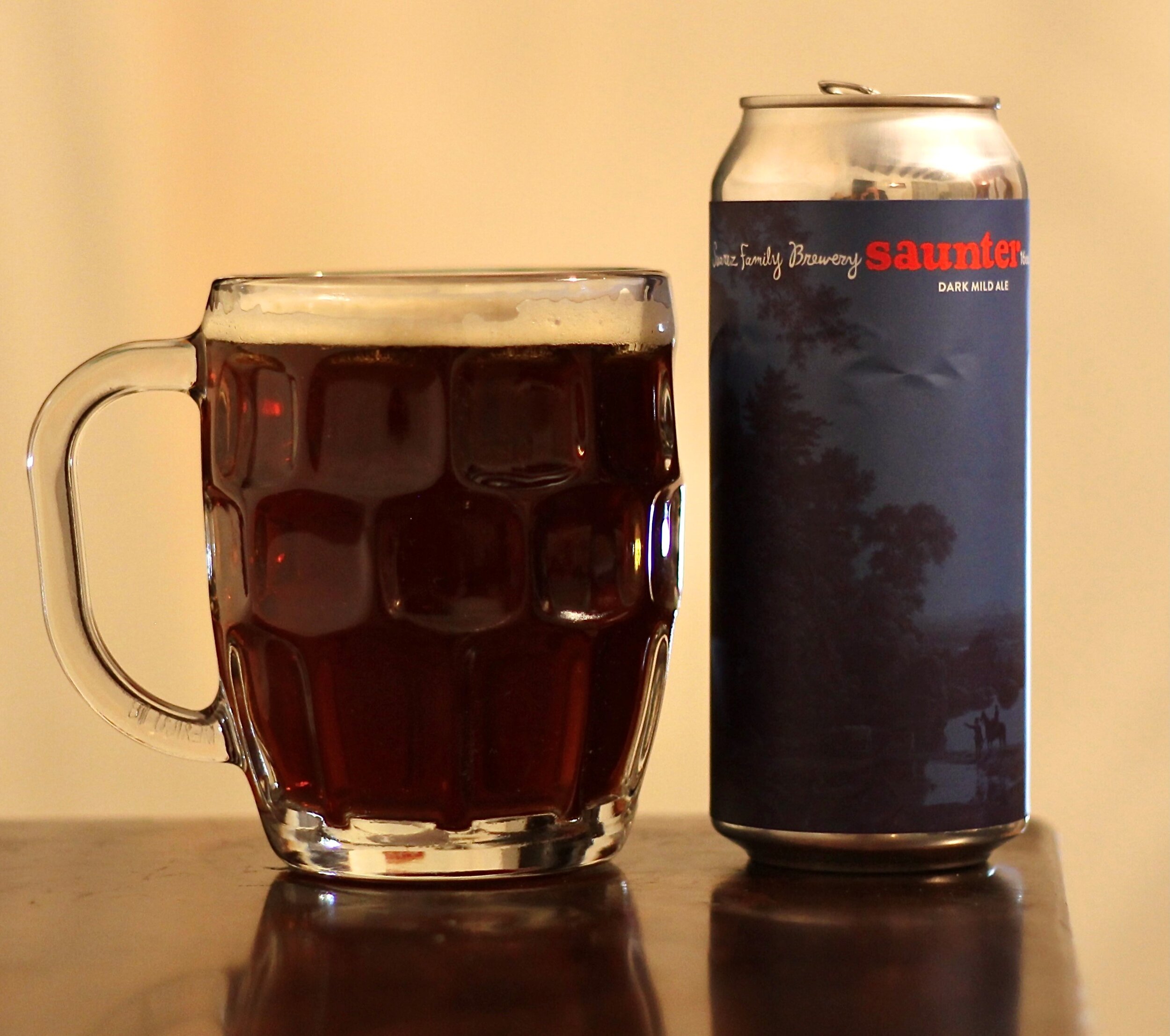Stocking beer glassware can be a daunting task. With so many options to choose from, it might be tempting to stick with a shaker pint. And while the shaker isn’t as bad as many make it out to be, it really shouldn’t be a major player either at a beer bar or your home bar.
But having a respectable selection of glassware doesn’t need to break the bank or become unmanageable. There are four widely available glass styles that are affordable, cover a wide array of styles, and will satisfy the most discerning beer drinker.
Here they are.
Willi Becher
The Willi Becher is one of the most versatile beer glasses available. Its simple, slender, and slightly curved shape makes it attractive without being ostentatious. The curvature helps it retain foam and carbonation. While it can be used for ales and mixed-fermentation beers, it’s especially well-suited for lagers, particularly given its Germanic origins.
You can also find it in an array of sizes from 10 to 20 ounces. So, there’s flexibility to fit your needs.
Use this glass with Helles, Dunkel, Vienna Lager, Schwarzbier, Märzen, Festbier, Bock, Baltic Porter, Czech Pale, Amber and Dark Lagers, German Rauchbier, and Adjunct Lager. However, you can cross over into ale territory with delicate beers like Kölsch, Altbier and Cream Ale too.
Fun fact: Becher means “cup” in German, and this one was created by a man named Willy Steinmeier. So, Willy Becher = Willy cup.
Tulip Pint
Though often associated with Guinness, the tulip pint glass is not proprietary and is widely used. And for good reasons. Like the Willi Becher, the simple design of the tulip pint has a subtle curvature, creating a better sensory experience than other beer glasses found in the British Isles (e.g., the nonic, dimple mug, and conical (aka shaker)). Its curvature helps enhance aroma and preserve foam better than these other glasses. And though it’s great for British-style beer, it works with others as well.
Generally found in a larger size (16-20 ounces, and don’t @me about a “proper pint”), this glass is best with low to mid strength beers that may include Bitter, Dark Mild, Brown Ale, Porter, Stout, Scottish Ale, Irish Red Ale, Blond Ale, Pale Ale, IPA and Amber Ale.
Stemmed Tulip
This one may be a little pricier than the others, but it is still within reason and is key to a well-rounded glassware selection. The stemmed tulip glass works best with a variety of Belgian beer styles, but it can be used with others. It’s an incredibly versatile glass that will elevate one’s beer drinking experience as it’s a little more dressed up in appearance, giving a more elegant flair than others. This subtly curved glass is ideal from a sensory perspective (you may be picking up on a pattern here by now).
They can be on the larger side, which accommodates a robust amount of foam.
Consider these styles for this glass shape: Dubbel, Tripel, Saison, Biere de Garde, Golden Strong Ale, Strong Dark Ale, Gueuze, Lambic, Wild Ale, Oud Bruin, Flanders Red Ale, and Witbier/Wheat Beer.
(A quick note: stemmed tulips can vary in shape. In particular, some have a much wider bowl than the glass depicted here. Those types of glasses are great, but I feel the narrower version depicted here lends itself better to a greater array of styles.)
Snifter
Sure, it’s occasionally nice when an unknowing bar serves a 12-percent stout in a 20-ounce shaker pint for a fraction of what the beer should cost. But strong, bold beers are properly served in a smaller vessel (holding 8-12 ounces), and a snifter glass is quite often best suited for these beers. A snifter beer glass is essentially a stout version of the stemmed tulip and it’s designed more for sipping rather than chugging. The intense curvature accentuates the aromas and enhances the sensory experience.
This glass is great for: Barleywine, Doppelbock, Double and Triple IPA, and anything “Imperial”.
--
Stick with these four, and your glassware game will be simple and stylish, meeting all your needs from Pilsner to Gueuze. And, you won’t have to spend an absurd amount of money to buy them!
(Original glassware images for this post come from the Sahm website.)




